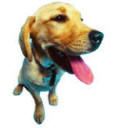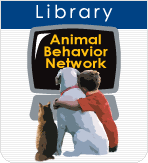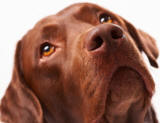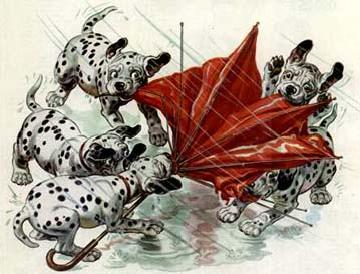|
Need Help?
|
|
Call
1-800-372-3706
to
speak to a Veterinary Behavior Technician |
|
Paws To Speak!
Member
Main Menu
|
|

Play

Positive
Leadership
The human stops and
starts the game.
|
 |
|
Help is at your
fingertips by library, email and
phone. |

Click on
Library Icon
to learn more
|
Introduction to
dog toys
Toys provide the dog with mental
stimulation, appropriate social
interaction and self entertainment.
Appropriate dog toys include such things
as squeaky toys, dental ropes, balls,
and tug-of-war toys. Initially, limit
tug-of-war games to dental ropes to
provide a positive introduction to chews
that help clean the teeth.
Rules
for dog play
There are
"rules of play" for games between people
and dogs. These basic rules apply to
lighthearted play, as well as tug-of-war
or any form of rough housing. These
rules allow people to play tug-of-war
and do not encourage aggression towards
people later in life.
|
Rules are intended to give
the dog a clear message that
the human retains a
leadership role during play. |
The dog is not allowed to
initiate the game. The human always starts the
game, even if it is only a few
seconds after the dog tries to
get the human to play and then
gives up.
Dog teeth are
not allowed to touch human skin or clothing at any
time or the game stops.
If this happens, stop
the game for at least one minute, and then begin
again. (Remember, you are the initiator). Or, set a
"tooth on skin pressure limit." If dog's teeth place
any more than minimal pressure, then yelp as if you
are mortally wounded, remove the toy, and stop
playing. This teaches the dog not to nip. For
puppies, the "tooth on skin pressure limit" is a
starting point to teach bite inhibition. Once the
puppy understands that any pressure by
teeth on human skin is too much, begin the "yelping
routine" for any
contact by teeth on skin.
A rule of any game is that
the dog must be willing stop
playing and sit immediately upon
your request. If the dog
is holding a toy, the dog must
be willing to release it to you
or to drop it immediately on
request. If the dog does both,
then the game can begin again.
If the dog refuses, the human
takes the toy away and stops
play for a few minutes,
completely ignoring the dog.
Introducing play toys
The key to introducing
non-chew toys as a positive thing for the dog is,
first of all, to play with them yourself. Act
excited and show interest in them. Put them in front
of the dog and then take them away. Act like you are
more interested in the toy than the dog. When the dog shows any interest in
the toy, praise the dog. This is a good time to
begin to consistently call the toy by one name,
pronouncing it the same way every time. Many dogs
learn toy names and will go and get them when
requested. Keep a couple of toys out and available
to the dog at all times. Rotate the remaining
toys to keep the dog's interest in them.
toy than the dog. When the dog shows any interest in
the toy, praise the dog. This is a good time to
begin to consistently call the toy by one name,
pronouncing it the same way every time. Many dogs
learn toy names and will go and get them when
requested. Keep a couple of toys out and available
to the dog at all times. Rotate the remaining
toys to keep the dog's interest in them.
Safe toys
Do not give
the dog discarded clothing to pets (e.g., old shoes)
as playthings. This makes it more difficult for the
dog to distinguish between household possessions and
chew toys. Do not give the dog toys that have items
that might be swallowed such as buttons or strings.
Toys should be large enough and sturdy enough that
they cannot be broken or eaten. This means that all
chew and play toys must be indestructible by your
dog.
|